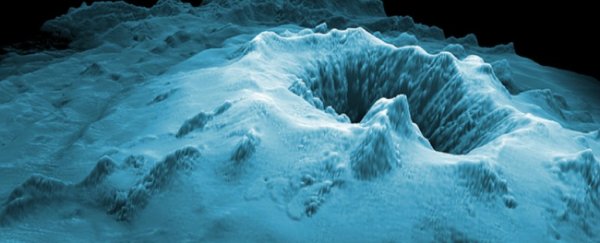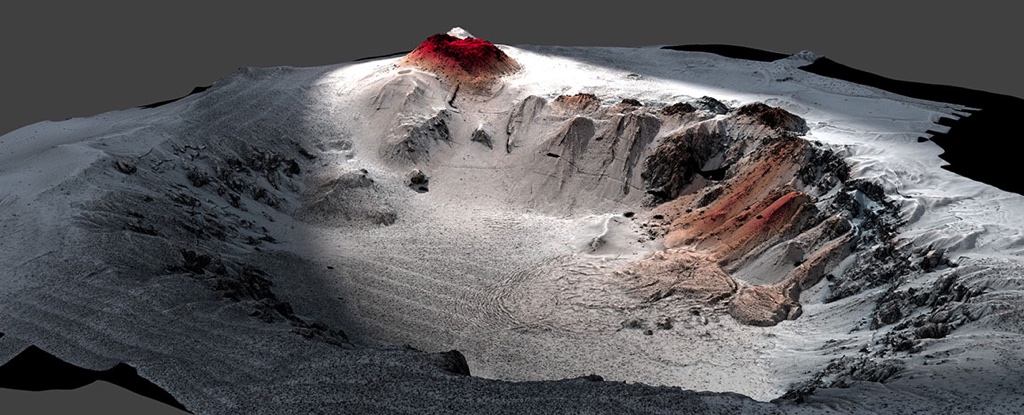By Amanda Connolly Global News
Posted November 28, 2021
NDP Leader Jagmeet Singh says Ottawa must make it easier for nurses trained abroad to contribute to the fight against COVID-19 in Canada, as the virus continues to strain health-care workers and the new Omicron variant fuels new concerns about the ongoing evolution of the virus.

In an interview with The West Block‘s Mercedes Stephenson, Singh said the government should create a work permit for nurses who qualify to come to Canada under immigration pathways prioritizing health-care workers, but whose applications for permanent residency face continued delays.
“We’re in a massive shortage of health-care workers, particularly nurses. But there are thousands of nurses who are trained internationally who are in Canada, and the only barrier to them actually being able to work is their immigration status,” said Singh.
“One small change to their immigration status would allow them to practise here and provide help to Canadians who need desperately their work.”
Singh said the wait for their permanent residency means many nurses who have passed licensing exams to practise in Canada are not able to do so, at a time when health-care workers are burning out.
The pandemic has driven rising rates of burnout and exhaustion among Canadian health-care workers, including doctors, nurses and mental health workers. All have faced unprecedented strains and demands over the course of the last 19 months as they fought on the front lines of the pandemic.
Last week, a union survey of B.C. nurses found 35 per cent are considering quitting because of the pressures of the COVID-19 pandemic, which experts say amplified chronic issues around understaffing.
READ MORE: ‘Burnt out and pushed beyond their limits’ — nurses struggle to work and care for own families
The issue of burnout in nurses is not unique to that province, though, or to Canada. It’s emerged as one of the major shadow pandemics of the COVID-19 era as successive waves of the virus have pummelled health-care systems around the world.
Part of the challenge, though, has been the length and grind of the pandemic, many have said, pointing to the broad social support for doctors and nurses in the early days of COVID-19 compared with the vitriol and threats by anti-vaccine extremists increasingly targeting many of them.
The B.C. Nurses Union has said it would need roughly 24,000 new nurses in that province alone by 2029 to ease the shortage, but nursing schools in Canada have also faced challenges in scaling up their programs to train greater numbers of students to keep up with demand.
READ MORE: ‘You just felt chronically tired’ — COVID-19 pandemic burning out Canadian nurses
And that demand is not letting up as cases continue to ebb and flow across the country.
Last week, public health officials around the world also raised concerns about a new variant dubbed Omicron that was first identified by researchers in South Africa.
Multiple countries quickly slapped travel restrictions into place, but the variant has been detected in Hong Kong and Belgium in addition to a spike in cases in South Africa.
There are not yet any confirmed cases of the variant in Canada, chief public health officer Dr. Theresa Tam said on Friday. But it will take days or weeks until experts have a clear picture of the threat the variant may pose to countries, even those with highly vaccinated populations.
“Due to the potential for increased transmissibility and the possibility of increased resistance to vaccine-induced protection, we are concerned about this new variant and closely monitoring the evolving situation,” Tam said.

Patty Winsa
Data Reporter
Sunday, November 28, 2021
Canadian Lisa Coneybeare endured tragedy every day as a nurse on a COVID-19 floor in a Los Angeles hospital and after months of seeing patient after patient die, she decided she needed to come back to Ontario, where she was born, and help fight the pandemic here.
“I’d worked COVID for five or six months and thought, ‘Canada is going to need me,’ ” said Coneybeare, who has a master’s in clinical nursing and another as a nurse practitioner from both UCLA and California State University in Los Angeles.
What she was not prepared for, however, is that she would still be in the U.S. as Canada endured the second and third, and now a fourth wave of the pandemic, which has magnified this country’s shortage of registered nurses.
Hundreds of potential foreign-trained nurses who want to work in Canada, including Coneybeare, have been caught in a backlog at the National Nursing Assessment Service, a Canadian not-for-profit which vets and authenticates their academic credentials.
The delay is due to an “unusually high volume of applications” to the assessment service, said its executive director Gayle Waxman, in an email. “This has caused a delay in reviewing a minority of applications. NNAS has notified the applicants whose applications are impacted.
“We of course apologize for the delay and anticipate that it will be resolved in the near future,” said Waxman.
The assessment service is a Canadian non-profit that contracts the work out to an American company. The service received nearly 7,000 applications from foreign-educated nurses wanting to work here in the fiscal year ending on March 31, 2021, an 11 per cent increase over the year before, said Waxman.
But the assessment is only one of numerous hurdles foreign applicants face when they try to get licensed by a provincial college, with most of them also pursuing permanent residency through Canadian immigration in a separate, unrelated process.
The result, experts say, is that thousands of potential nurses come to Canada as live-in caregivers or permanent residents hoping to realize their dreams.
But they end up working as personal support workers or caregivers to support their family because of the length of time it takes to get licensed, the fees associated with it, or the cost of and access to bridging programs at school to upgrade their education.
“Once they get here, they face a disjointed and expensive journey as they attempt to get licensed to practise,” said Joan Atlin, director of strategy, policy and research for World Education Services. “Many abandon the attempt at some point along the way and our health-care system loses their skills.
“The players responsible for immigration, assessment, bridging, and licensure need to be tied together into a coherent system,” she said.
World Education Services, a non-profit that helps international students, immigrants and refugees realize their career goals in the U.S. and Canada, estimates it can cost up to $16,000 for a foreign-trained nurse to get licensed here, which includes expenses such as the NNAS academic assessment, the nursing exam, application fees to a provincial nursing college and academic bridging programs.
The education service was one of 50 organizations that signed an open letter during the federal election calling for a national strategy to address the barriers to licensing faced by internationally educated health professionals
“Right now, we don’t even have an accurate picture of how many health-care professionals arrive in Canada as students, permanent residents, or temporary workers — including caregivers — every year,” said Atlin.
Data from Immigration, Refugees and Citizenship Canada shows that between 2015 and 2021 no temporary foreign workers in Ontario, including caregivers, declared their intended occupation as licensed practical nurse. And only 205 new permanent residents in Ontario declared nursing as their intended occupation to the Immigration Department in 2019.
Yet, that year more than 4,500 internationally educated nurses applied to the Ontario College of Nursing, which requires applicants to be citizens, permanent residents, or have a valid work/study permit, suggesting that most of those applicants would already be in the country.
The gap in the data is likely immigrants with nursing backgrounds who come to Canada through the caregiver program. They would record their intended occupation on immigration documents as health care or as personal support worker, work in a long-term-care setting and not as a nurse, “because that’s the focus of the immigration stream that they’re entering Canada through,” said Naomi Lightman, an assistant professor of sociology at the University of Calgary.
The forms are “not really taken to be aspirational. It’s taken to be quite practical. It’s administrative. They’re just filling out where they think their best chances are as anyone would. So I think it certainly doesn’t speak to the human capital of those immigrants,” said Lightman, whose research has shown that caregivers are typically highly skilled and more than half have a bachelor’s degree.
Applicants who apply to the college of nurses must have Canadian citizenship, permanent residency or a valid work/study permit to practise nursing in Ontario. But a work permit for a specific type of employment, such as live-in caregiver, isn’t recognized, according to the College of Nurses of Ontario.
Lightman’s research also shows anecdotally that many caregivers start retraining, but are unable to finish because of the “cost or because of family obligations.”
“There are a lot of barriers to upgrading their skills or actually transferring their credentials from their home country,” said Lightman.
For those who remain on the path, the College of Nurses of Ontario says it can take up to 18 months to get licensed, although Samantha Moore, a registered nurse who bought a nurse recruiting company called PRN Staffing Solutions, says it is more like one to three years.
Her company recruits internationally educated nurses for rural hospitals in northern Ontario and other parts of the country.
Some are so desperate for nurses they offer moving expenses, paid housing, and in the case of Newfoundland and Labrador, a $20,000 relocation reimbursement package to attract staff. That province does not require nurses to have work permits or permanent residency to get an active nursing licence.
“Since COVID, it’s been very difficult,” said Moore. “I’ve got four nurses that we actually have signed offer letters with that are dealing with immigration. And they’ve had job offers for over six months. But immigration is just unfortunately extremely slow with COVID so they haven’t been able to get the paperwork to come into the country.”
Moore thinks the process could be streamlined.
“There’s a lot of complications that come from everything. Immigration needs one thing, NNAS needs another. Each province needs another,” said Moore, who worked in England for a time and said the process to licensure there was much simpler.
“As a nurse myself, it’s not that I want anyone uneducated or lower to get in and get a licence. It just needs to be a streamlined, faster process.”
The Manitoba government recently recognized the barriers that internationally educated nurses face and announced an initiative to provide those in the province with up to $23,000 in financial assistance for clinical competence assessments, bridge training and other expenses such as a living allowance and child care.
The Ontario government recently announced a program similar to Manitoba’s to entice nurses to work in long-term care, as well as a plan to add 500 enrolments to bridging programs.
Eligible registered practical nurses, who typically have a diploma, will have access to up to $10,000 a year toward upgrading their education to become registered nurses, which requires a degree. A further $5,000 a year will be available to candidates to cover expenses such as course materials, tutoring and child care.
Internationally trained nurses who are eligible can access up to $6,000 a year in financial support to gain the credentials they need to work in Ontario.
In return, the government expects applicants to commit to long-term-care work for the same amount of time as they received funding under the program.
When Manitoba offered the incentives, the government said it didn’t know how many internationally educated nurses were in the province but the program, announced July 8, received 1,210 online applications in the first week.
For Coneybeare, the process has already dragged out for so long that she left her job in Los Angeles and moved to Virginia Hospital Center in Arlington in June to be closer to her daughter, who goes to school there.
It took her months to gather all of the documentation required by the NNAS, including transcripts from both schools she attended and syllabuses for every course she took.
In December of 2020, she says the NNAS told her it was reviewing her file but then in June she got a request for more transcripts, which she says she’d already sent. The NNAS doesn’t start the review until it has every document it requires and it says it typically takes around nine months to gather all the documents. The review takes a minimum of 12 weeks from that point.
She finally received her NNAS assessment Nov. 8 and said in an email that she has been told she should be registered (licensed) by the Ontario College of Nurses in less than half the time it took for the assessment.
The process is rigorous, rightfully, as Coneybeare says, but it has made it difficult to make any plans to move to Canada.
“If I had trusted the process and said, ‘Oh, well, you know, great, I’ll be licensed and I’ll be able to start applying for jobs 12 weeks after the first of December 2020,’ then I would have been applying for jobs back in February, which I started to do,” said Coneybeare. “And (I) found out very quickly that nobody’s going to pay any attention to your application because you have not got the NNAS seal of approval.”
Another Canadian, Grant Nockles, is also waiting for the NNAS to assess his U.K. education and says it took him six months to get all of the documents, including his university transcript from 1997 and references.
Nockles has worked as a nurse in the U.K. for 21 years, has a master’s in advanced health-care practice and, he says, “quite a vast bag of experience under my belt.”
“It’s quite a long and frustrating wait,” said Nockles. “My life is waiting for me in Canada. I mean, I know they have to have these standards to protect the public and to have that assurance. But I think with any kind of pandemic or world challenge, you kind of adapt — how else can we make this process quicker, but in a safe way?”
Nurses have always been the front lines of health care but never more critical than during the COVID-19 crisis. In this ongoing series, we explore the many issues impacting nursing.
Patty Winsa is a Toronto-based data reporter for the Star. Reach her via email: pwinsa@thestar.ca


:format(jpeg)/cloudfront-us-east-1.images.arcpublishing.com/tgam/ABR7A24A2BPD3PEFA4ITTQYTMY.JPG)
:format(jpeg)/cloudfront-us-east-1.images.arcpublishing.com/tgam/VJW5KNHNQNNDZJJDHBGHCLPKMM.JPG)
:format(jpeg)/cloudfront-us-east-1.images.arcpublishing.com/tgam/X45YQWSQAROPHG62HUPBOOR7CI.JPG)
:format(jpeg)/cloudfront-us-east-1.images.arcpublishing.com/tgam/ZF3QMXKLEJMDTKUZQZWAGFTELA.JPG)
:format(jpeg)/cloudfront-us-east-1.images.arcpublishing.com/tgam/VJE2EUJDHBO3HP4QADTC7F37UA.JPG)
:format(jpeg)/cloudfront-us-east-1.images.arcpublishing.com/tgam/EINH5SGJUNMJRLM336TH24DIF4.JPG)




















